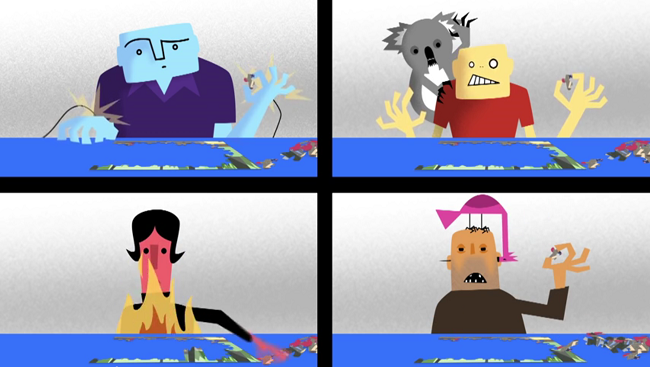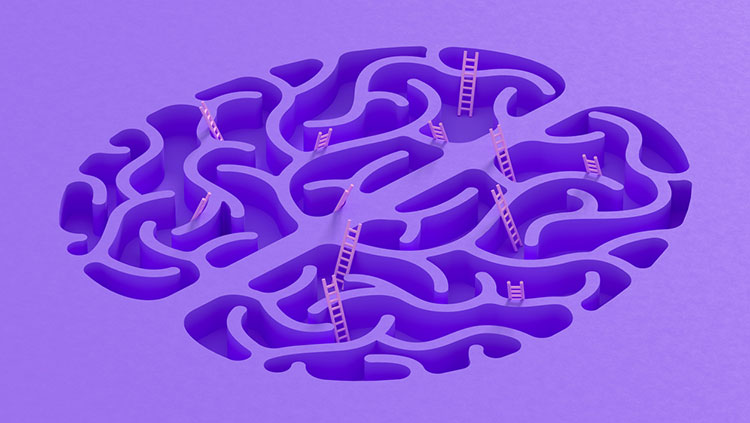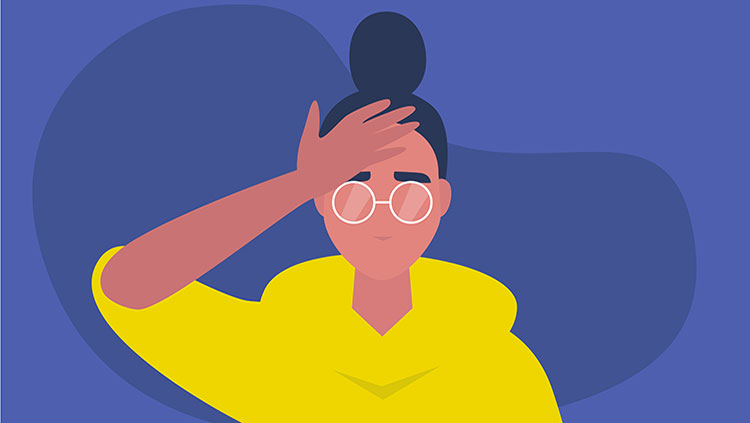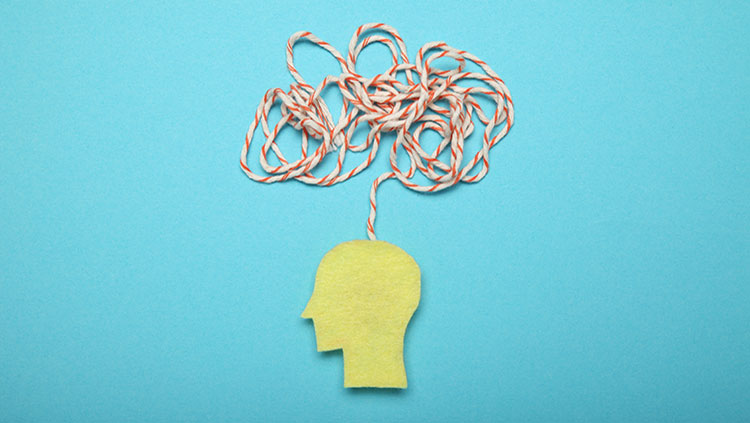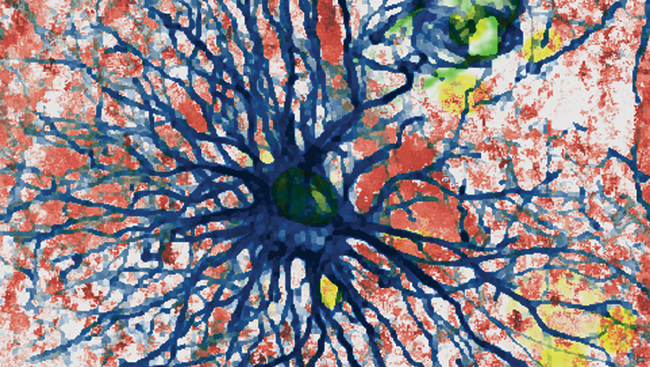
The Body’s Pain Control System
Studies of the body’s own pain-control system demonstrated the existence of naturally occurring opioids — the endorphins.
http://www.jneurosci.org/content/28/13.cover-expansion

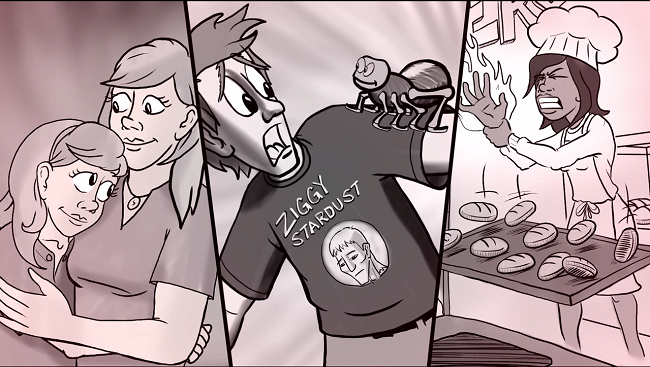
Elliot Krane: How Do Nerves Work?
At any moment, there is an electrical storm coursing through your body. Discover how chemical reactions create an electric current that drives our responses to everything from hot pans to a mother’s caress.


Touch and Pain
Touch is the sense by which we determine the characteristics of objects: size, shape, and texture.
Illustration by Lydia V. Kibiuk, Baltimore, MD; Devon Stuart, Harrisburg, PA

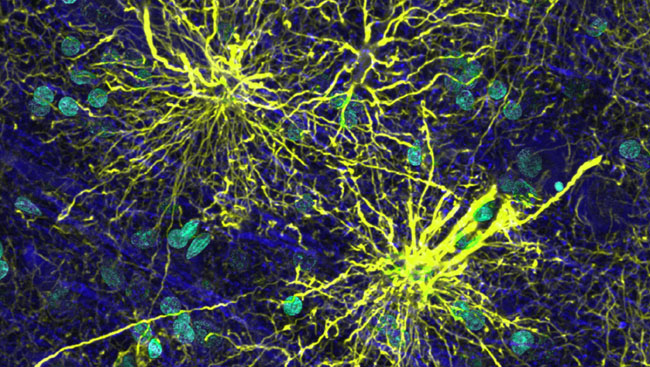
Sending and Receiving Pain and Messages
Processing information from the sensory systems is one of many functions of the brain. Such information is often the first step in other brain activities, including learning and retaining knowledge.
http://www.jneurosci.org/content/29/10.cover-expansion

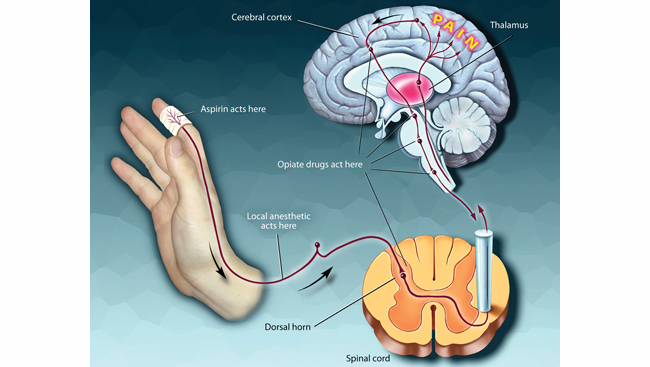
Treating Pain
Medical science offers us a number of different ways to dull or treat pain.
Illustration by Lydia V. Kibiuk, Baltimore, MD

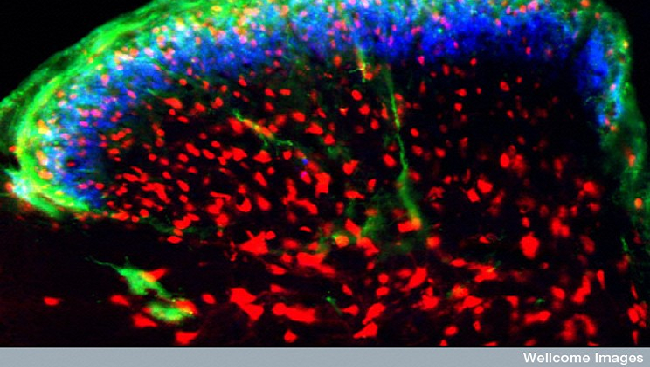
A Dose of Music for Pain Relief
A growing understanding of how music alters the experience of pain has led to the incorporation of musical therapy into pain rehabilitation programs.
Simon Beggs, Wellcome Trust

Pain -- from a minor sting to a major break -- is bound to happen, and your physical reactions to unpleasant stimuli depends on the brain and nervous system. But how does pain register in the brain, and what can that teach us about future treatments? To find out more, browse through the images and their descriptions and click on the link in each caption to read the full articles.
Have a question about what you just read in our roundup? Just ask! Submit A Question
About the Author
Juliet M. Beverly
Juliet M. Beverly is the senior editor for BrainFacts. She previously worked at the Embassy of Austria in the Office of Science & Technology as the assistant editor for Bridges, an online magazine covering transatlantic science and technology policy.






